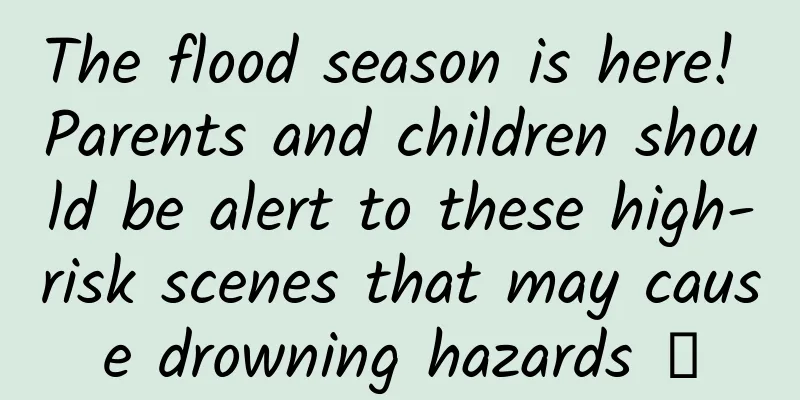One billion snow crabs mysteriously disappeared, and not being able to eat crab legs is just a trivial first step

|
Red snow crab legs as long as your arm are the crown of seafood feasts. These large crab legs are delicious whether grilled or steamed, and support a $160 million annual industry in Alaska, USA. Snow Crab Legs | DigiPub However, this year, the Alaska Fisheries Commission called off the snow crab fishing season for the first time because the main attraction of the event, the snow crabs that filled the Bering Strait, suddenly disappeared . The departure of snow crab Snow crabs (Chionoecetes opilio) are mainly distributed in the North Pacific and Northwest Atlantic, living in cold waters with an average depth of 110 meters. They are large in size, with males usually weighing 0.5 to 1.35 kg and a carapace of up to 16.5 cm; the carapace of females can also grow to 9.5 cm. The Japanese call snow crabs "Matsuba crabs", and some people call snow crabs "queen crabs" to compare them with emperor crabs and king crabs. However, just like the beginning of a disaster movie, the snow crabs that once covered the seabed have disappeared this winter . In two years, an estimated 1 billion snow crabs mysteriously disappeared , and fishing spots that once caught thousands of crabs are now only able to catch a few hundred. Snow Crab | Totti / Wikimedia Commons However, looking back, there were actually signs of the disappearance of snow crabs. Affected by the Northeast Pacific Current, 2018 was one of the warmest years on record in the Bering Sea with the smallest sea ice area. Surveys show that the number of snow crabs was still high that year, with about 11.7 billion. However, starting in 2019, as ocean temperatures continued to rise, the number of small snow crabs began to decline sharply. By 2021, it was not only the small snow crabs that disappeared, but crabs of all ages were decreasing. Workers unload snow crabs at the dock in 2013. | Steve Ringman / Seattle Times According to statistics, there are only 1.9 billion snow crabs left in Alaska this year, a drop of more than 80% compared to 2018. Among them, the number of mature male snow crabs has decreased by about 40%, and the number of female snow crabs has decreased by 99% . Being eaten, dying of heat, dying of starvation Ocean warming is the most important reason for the disappearance of snow crabs. Snow crabs need cold water below 2°C to grow. However, Alaska, the home of snow crabs, is the fastest warming state in the United States, with billions of tons of ice melting every year. The rising water temperature has caused the cold water habitat on the Bering Sea to shrink dramatically . The habitat is getting smaller and smaller, and the food resources are getting less and less, so the snow crabs have to go hungry. Snow crab on the seafloor | Derek Keats / Wikimedia Commons Warmer waters also speed up the crabs' metabolism , putting them further out of energy deficit. Some crabs have begun migrating north to cooler Russian waters, but the majority have stayed put, even turning to cannibalism to fill their stomachs. The shrinking cold water habitat also brings another bad news to snow crabs - more predators are coming . The cold waters that snow crabs like are originally their natural "refuges", and those cold-fearing predators (such as Pacific cod) will automatically retreat. However, once the water temperature rises, predators can freely enter the snow crabs' territory and start to attack them. Pacific Cod | NOAA Fisheries Originally, the arrival of cod would only harm young snow crabs, while adult snow crabs could escape the disaster with their strong protective armor. However, researchers found that it was not only the young snow crabs that were reduced in number, but almost all snow crabs of all ages were gone. This shows that predators that entered the restricted area are not the biggest reason for the decline in the number of snow crabs. Another possible reason for the disappearance of snow crabs is that the shrinking habitat allows diseases to spread faster . As water temperatures warm, more pathogens can survive and spread rapidly among snow crab populations. For example, the parasite Hematodinium perezi causes bitter crab syndrome, in which infected crabs become weak and eventually die, with a mortality rate of up to 86% within a few weeks of infection. Crabs with Bitter Crab Syndrome | Vanessa Lowe / NOAA In addition, large-scale fishing by humans is also one of the reasons for their decline . On the one hand, as sea ice becomes less and less, fishing boats can enter more open water, which means snow crabs have fewer places to hide. On the other hand, even if fishermen do not intend to catch snow crabs, the trawl nets used to catch other fish will still pick up snow crabs living on the seabed by chance - and when the trawl nets sweep across the seabed, they may also cause damage to snow crabs, especially when they molt in the spring. Fishing boats transporting crab pots | Ashlan Prout Will snow crabs come back? In the general trend of global warming, 90% of the heat on the earth is absorbed by the ocean. As the sea temperature gradually rises, species that are accustomed to living in cold water either wait for death in shrinking habitats or are forced to become "nomads" in the sea. These species include not only snow crabs, but also its relatives - because of the small number, the red king crab fishing season in Bristol Bay has been cancelled for two consecutive years. For fishermen who rely on snow crabs for survival, the disappearance of snow crabs has made them lose their livelihoods; for predators in the ocean, without snow crabs, they have lost a food source they rely on for survival. The Bering Sea has a very complex ecosystem, and every link in it is vital. The disappearance of snow crabs is like an earthquake for the entire ecosystem. If their numbers continue to decline, other marine life will also be in danger. Boiled Snow Crab | leejungdong / Wikimedia Commons In order to save the disappearing snow crabs, in addition to suspending fishing, the North Pacific Fisheries Management Committee (NPFMC) is preparing to launch a population reconstruction plan. At the same time, scientists will continue to explore the impact of temperature and disease on snow crabs and strive to find ways to save snow crabs. However, the ocean is getting warmer day by day, and no one knows whether these efforts can ultimately save snow crabs. Researchers measuring snow crabs | NOAA The good news is that researchers have found that some small juvenile snow crabs are beginning to appear in Alaska . If the rising temperature in the Bering Sea allows them to grow up smoothly, they will reach maturity and begin to reproduce in 3 to 4 years. We can only hope that everyone's efforts have not been in vain, the number of snow crabs will gradually increase, and we can still see groups of snow crabs running wildly on the seabed with their long legs. References [1]https://www.theguardian.com/environment/2022/oct/20/billions-gone-whats-behind-the-disappearance-of-alaska-snow-crabs [2][https://www.conservation.org/blog/news-spotlight-what-happened-to-alaska-s-snow-crabs-scientists-have-a-few-leads [3]https://mashable.com/article/snow-crabs-disappeared-alaska-why [4]https://edition.cnn.com/2022/10/16/us/alaska-snow-crab-harvest-canceled-climate/index.html [5]https://en.wikipedia.org/wiki/Hematodinium_perezi [6]https://time.com/6222956/alaska-snow-crab-disappearance/ [7]https://www.nytimes.com/2022/10/14/us/alaska-cancels-crab-season.html Author: Cat Tun Edit: Flip This article comes from the Species Calendar, welcome to forward If you need to reprint, please contact [email protected] |
>>: Can a shrunk sweater be restored to its original state after washing?
Recommend
The essence of information flow copywriting lies in whether you can seduce girls! ?
Flirting with girls is actually a feeling. Succes...
Master these 4 points! Tik Tok search traffic is easily captured!
Do a little survey! If you were born after 85s, 9...
Short video marketing, save these strategies quickly!
In recent years, with the sharp increase in deman...
Operation and promotion: How do Pinduoduo, Xinshixiang, etc. achieve fission?
In the second half of 2018, there were fewer conc...
Taklimakan is not a hopeless situation? The birth of desert ninjas!
Few people can live here for long. Even in today&...
Android imitates Huawei's weather drawing dial
[[191018]] Rendering You can see that this custom...
My child has a big head and short limbs. Could he be suffering from achondroplasia?
《Cotton Swab Medical Science Popularization》 Yong...
Pink pink pink pink...pink attack, are you ready?
The recently released "Barbie" created ...
Revealing the truth about not being able to grab red envelopes on Alipay, it's heartbreaking to read
On February 11, 2015 , Alipay distributed red env...
Why didn't a larger iPad appear this year?
In the early morning of October 17th, Beijing tim...
What is the reason why the WeChat mini program failed the review? What should I do if the WeChat Mini Program fails the review?
Q: What is the reason why the WeChat Mini Program...
The "sphere packing" problem that has troubled mathematicians for centuries has been solved by "sausages"?
Science and Technology Daily, Beijing, December 1...
Huawei was forced to give up its high-end mobile phone market share, and its story is full of perseverance and belief in the future.
"We survived." At the launch of Huawei&...
3 marketing ideas to implement Spring Festival marketing promotion
During this period, there should be many brands a...
![Snowflakes are more beautiful UE4 cluster array 2020 [HD quality]](/upload/images/67cc0060d87f2.webp)








